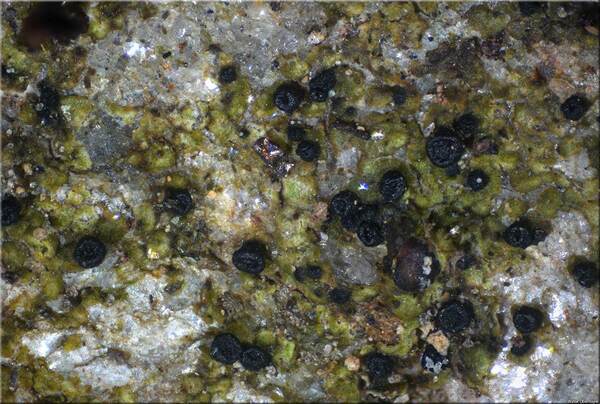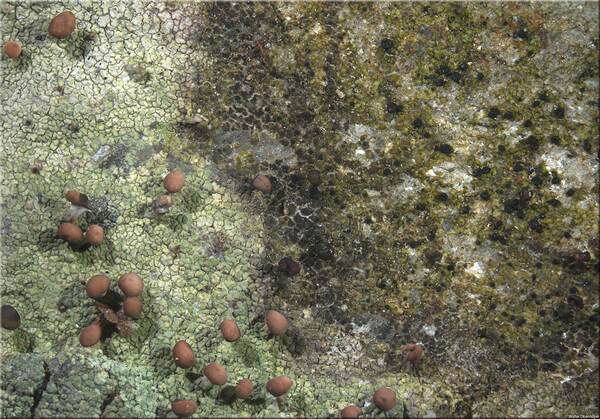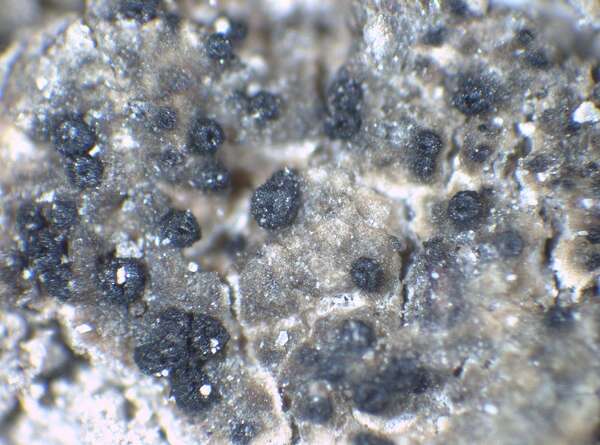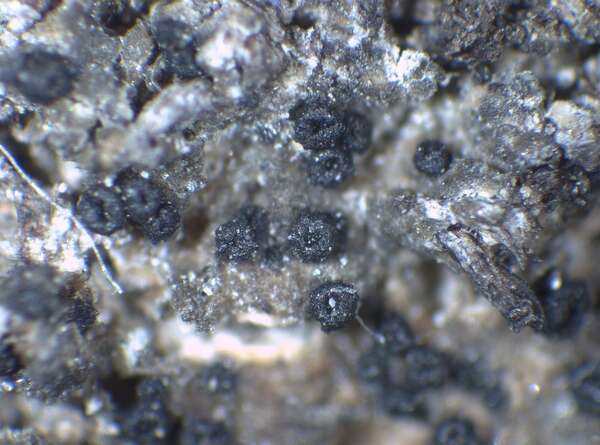Arthrorhaphis grisea Th. Fr.
N. Acta Reg. Soc. Sci. Upsal., ser. 3, 3: 304, 1861.
Synonyms: Bacidia arenicola (Nyl. ex Mudd) H. Olivier; Bacidia flavovirescens var. arenicola (Nyl. ex Mudd) A.L. Sm.; Gongylia sabuletorum (Fr.) Stein; Gongylia viridis A.L. Sm.; Lahmia fueistingii Körb.; Mycobacidia arenicola (Nyl. ex Mudd) Sacc. & D. Sacc.; Raphiospora arenicola Nyl. ex Mudd; Sagedia sabuletorum (Fr.) A. Massal.
Distribution: N - TAA (Nascimbene & al. 2022).
Description: Thallus crustose, episubstratic, grey-white to dark grey-green, thin, developing on the thalli of Baeomyces-species, immersed in the thallus of the host and appearing as a dark spot. Apothecia lecideine, black, 0.2-0.5 mm across, sessile, not constricted at base, with an initially urceolate, then concave to finally flat, smooth disc, and a thick, rugose, persistent proper margin. Exciple dark brownish green in the outer and innermost parts, paler inbetween; epithecium brownish to greenish brown, K-; hymenium colourless, inspersed with oil droplets, I ; paraphyses free, slender (to 2 μm thick), branched and anastomosing, not thickened at apex; hypothecium brown in lower part. Asci 8-spored, subcylindrical to clavate, the wall of young asci with a poorly developed tholus and an ocular chamber, that of mature asci more or less uniformly thick throughout. Ascospores (8-)12-15-septate, hyaline, acicular, thin-walled, (20-)30-70(-90) x 2-3.5(-4) μm. Pycnidia black, usually superficial, rarely immersed. Photobiont chlorococcoid. Spot tests: K-, C-, KC-, P-, UV-. Chemistry: without lichen substances.Note: an arctic-alpine species found on soil and weathered siliceous rocks near and above treeline, starting the life-cycle on specie of Baeomyces (B. carneus, B. rufus and, more rarely, B. placophyllus), later an autonomous lichen. The species is known only from South Tyrol, but it is probably more widespread in the Italian Alps.
Growth form: Crustose
Substrata: soil, terricolous mosses, and plant debris
Photobiont: green algae other than Trentepohlia
Reproductive strategy: mainly sexual
paras Baeomyces spp.
Commonnes-rarity: (info)
Alpine belt: rather rare
Subalpine belt: rare
Oromediterranean belt: absent
Montane belt: absent
Submediterranean belt: absent
Padanian area: absent
Humid submediterranean belt: absent
Humid mediterranean belt: absent
Dry mediterranean belt: absent

Predictive model
Herbarium samples
Growth form: Crustose
Substrata: soil, terricolous mosses, and plant debris
Photobiont: green algae other than Trentepohlia
Reproductive strategy: mainly sexual
paras Baeomyces spp.
Commonnes-rarity: (info)
Alpine belt: rather rare
Subalpine belt: rare
Oromediterranean belt: absent
Montane belt: absent
Submediterranean belt: absent
Padanian area: absent
Humid submediterranean belt: absent
Humid mediterranean belt: absent
Dry mediterranean belt: absent

Predictive model
| Herbarium samples |
 Index Fungorum
Index Fungorum
 GBIF
GBIF







